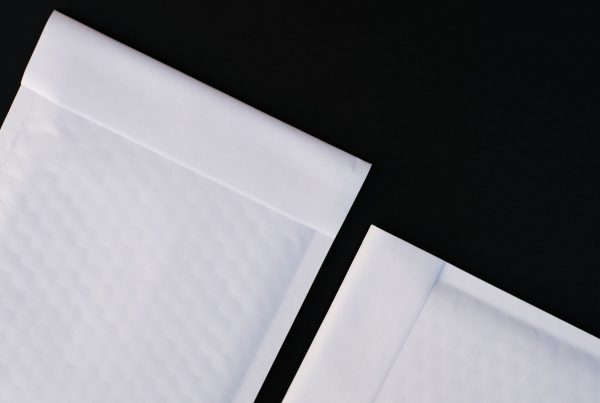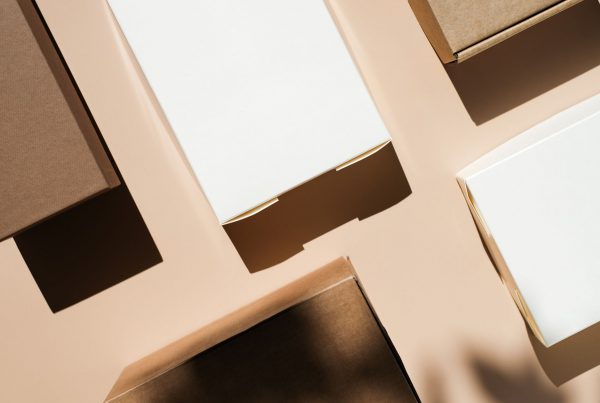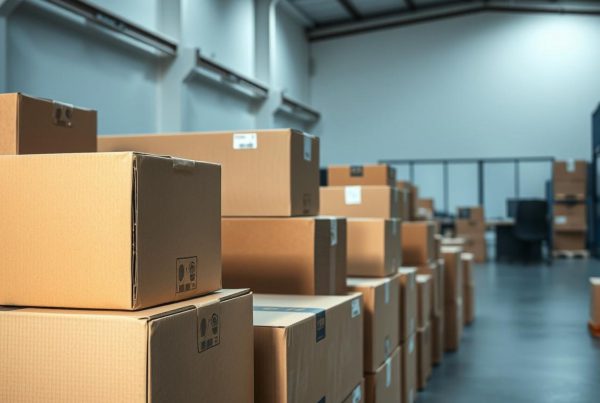Choosing the right type of mailer for your needs is more important than you might think. Your mailer determines how well your item is protected, the overall shipping weight, and how professional your package looks when it arrives at its destination. Two of the most popular types of mailers are poly mailers and padded envelopes.
But what’s the difference between them? Let’s dive in to explore.
What is a Poly Mailer?
When it comes to shipping small, non-fragile items, a poly mailer, particularly a padded poly mailer, can be an ideal choice. Crafted from plastic, these mailers are the epitome of lightness, durability, and resistance to elements. They offer a reliable option for many shipping needs, from online sellers to retail stores and even individuals sending gifts to loved ones.
At first glance, a poly mailer might seem like a simple plastic bag. However, it is much more than that. A poly mailer is purpose-built for shipping, made with specially designed features to protect the items enclosed within it.
The interior of a padded poly mailer is lined with padding, usually a layer of bubble wrap or a similar material, designed to shield the contents from minor impact damage during transit. This padding isn’t as extensive as what you’d find in other types of mailers, but it’s adequate for less fragile items.
The LUX Poly Bubble Mailers offered by The Boxery, for instance, embody these characteristics of a high-quality poly mailer. Their exterior is composed of multi-layered polyethylene, a durable plastic designed to endure the rigors of shipping, including rough handling, environmental elements, and more.
Inside, a layer of bubble wrap offers a further measure of protection for your items, cushioning them against shocks and vibrations that can occur during transport.
Advantages of Poly Mailers
Poly mailers offer several distinct advantages that make them a favored choice for many shipping scenarios:
- Lightweight: One of the key strengths of poly mailers is their weight—or rather, their lack thereof. As they’re crafted from lightweight plastic, poly mailers typically weigh less than other types of mailers, such as padded envelopes.
- Water-Resistant: Poly mailers boast a plastic exterior that’s naturally resistant to water and other liquids. This characteristic can prove crucial when your packages need to brave the elements, ensuring the contents stay dry even if the mailer itself gets wet.
- Tear-Resistant: Poly mailers are made from a durable material designed to resist tears and punctures. This resistance can be particularly beneficial during transit, where packages can be exposed to rough handling. With a poly mailer, you can rest assured that your items are well-protected.
Disadvantages of Poly Mailers
While poly mailers offer numerous benefits, it’s also important to recognize their limitations:
- Less Padding: While padded poly mailers do offer some degree of padding, it’s typically not as extensive as what you’d find in other types of mailers, such as padded envelopes. This limited padding makes poly mailers less suited for very fragile items that require extensive cushioning during transit.
In conclusion, a poly mailer serves as a versatile, economical, and resilient solution for many shipping needs. By understanding its strengths and limitations, you can determine whether it’s the right fit for your particular shipping scenario.
What is a Padded Envelope?
A padded envelope, often made from kraft bubble mailers, is a type of envelope that includes an extra layer of padding, usually made from bubble wrap or a similar protective material.
The protective layer provides an extra measure of security, making padded envelopes a good choice for slightly more fragile items. The exterior of these envelopes is often made from kraft paper, a brown paper material that is both durable and biodegradable.
Advantages of Padded Envelopes
- Increased Protection: The extra padding in these envelopes can help protect fragile items during shipping.
- Biodegradable: Unlike poly mailers, padded envelopes made from kraft paper are biodegradable, making them a more environmentally friendly option.
Disadvantages of Padded Envelopes
- Heavier: Due to the extra padding, these envelopes are heavier than poly mailers, which could result in higher shipping costs.
- Not Water-Resistant: While kraft paper is durable, it isn’t water-resistant. Therefore, items might be susceptible to water damage during transport.
Conclusion
When choosing between a poly mailer and a padded envelope, consider the nature of the item you’re shipping, the distance it’s traveling, and your own personal preferences in terms of sustainability and cost-effectiveness.
Both mailers have their own strengths and weaknesses, but understanding these can help you make an informed decision. Whether you choose a padded poly mailer or a padded envelope made from brown kraft paper, both options provide adequate protection for your items while they’re in transit.
About the Company
The Boxery has been serving customers with high-quality packaging supplies since its establishment. With an extensive selection of products including padded envelopes, brown kraft paper, and padded poly mailers, they strive to meet the varied needs of individuals and businesses alike.
They are committed to providing efficient packaging solutions that align with customer requirements, without compromising on the quality or the environmental impact of their products. They source materials responsibly and work diligently to contribute towards a sustainable future for packaging.
In the realm of eCommerce, where the right packaging can mean the difference between a satisfied customer and a returned product, The Boxery continues to prove its worth as a trusted packaging supplies provider.





Recent Comments